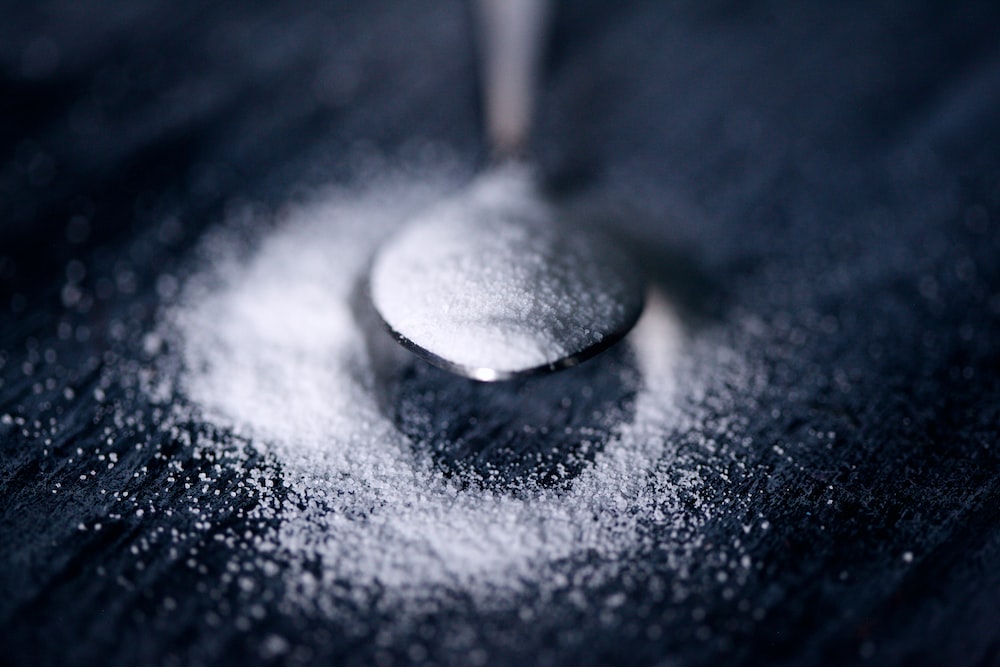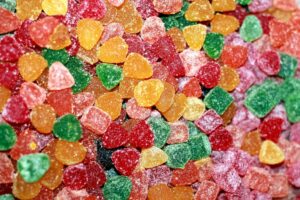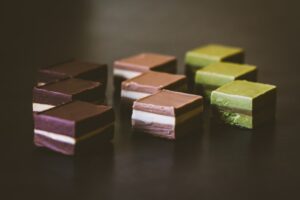You’ve probably heard the saying, ‘like a kid in a candy store.’ But have you ever wondered about the intricate process behind creating those delectable sweets?
From the rich history of candy making to the complex chemistry involved, the world of candy production is a fascinating blend of tradition and innovation.
As you explore the secrets of this sugary science, you’ll gain a newfound appreciation for the meticulous artistry and precision that goes into crafting your favorite treats.
Key Takeaways
- Candy making has a long history, dating back to ancient civilizations like the Egyptians and Mesopotamians, with sugar becoming more accessible during the Middle Ages.
- The essential ingredients for candy include sugar and syrups, flavoring and coloring, and binding agents, and the creation of candy involves various chemical reactions and transformations.
- Traditional candy making techniques emphasize artisanal craftsmanship, while modern innovations in candy production have enabled mass production and explored alternatives to artificial flavorings and colorings.
- Specific candy making processes include the production of chocolate from cocoa beans, artisanal candy crafting, the science of gummy candies, and the production of hard candies.
The History of Candy Making
The history of candy making spans centuries, with its roots intertwining with ancient cultures and evolving into the modern confectionery industry we know today.
Confectionery, the art of creating sweet treats, holds significant cultural importance throughout history. Ancient civilizations like the Egyptians and Mesopotamians were among the first to indulge in confectionery, using honey and fruits to create early forms of candy. The cultural significance of these early confections varied from religious offerings to symbols of wealth and status.
As trade routes expanded, the knowledge of confectionery spread across the world, leading to the development of new techniques and flavors. During the Middle Ages, sugar became more accessible, leading to an increase in candy production and consumption.
By the 1800s, advancements in technology and manufacturing processes revolutionized the confectionery industry, making mass production possible. This allowed candy to become more affordable and widely available, further embedding its cultural significance.
Understanding the history of confectionery provides insight into the cultural, social, and economic factors that have shaped the candy industry into what it’s today.
Essential Ingredients for Candy
When making candy, the essential ingredients that form the foundation of these sweet treats include sugar and syrups, flavoring and coloring, and binding agents.
These components work together to create the desired taste, texture, and appearance of the final product. Understanding the role of each ingredient is crucial in achieving the perfect balance and consistency in your candy making process.
Sugar and Syrups
Using a precise combination of sugar and syrups is essential for creating the perfect texture and sweetness in various types of candy. Sugar extraction and syrup crystallization are key processes in candy production. Different types of sugar and syrups are used to achieve specific textures and flavors. Here’s a breakdown of some common sugars and syrups used in candy making:
| Sugar Type | Description |
|---|---|
| Granulated sugar | Commonly used for hard candies |
| Brown sugar | Adds a rich flavor to caramels |
| Powdered sugar | Used in making fondant and icings |
| Corn syrup | Prevents crystallization in caramels |
| Honey | Adds distinct flavor to various candies |
The precise combination and manipulation of these ingredients are crucial in achieving the desired candy texture and taste.
Flavoring and Coloring
Flavoring and coloring play a crucial role in enhancing the sensory appeal of candies, imparting unique tastes and vibrant hues to the confectionery products.
When it comes to flavoring, candy makers often face a choice between natural and artificial options. Natural flavorings are derived from sources such as fruits, herbs, and spices, providing a more authentic taste. On the other hand, artificial flavorings are chemically synthesized to mimic natural flavors.
Similarly, coloring agents can be natural, derived from plants and minerals, or artificial, created using synthetic dyes. While natural ingredients are often perceived as healthier, artificial options can offer more vibrant and consistent colors.
However, some artificial flavorings and colorings may have potential health implications, prompting the food industry to explore cleaner and safer alternatives to meet consumer demands for healthier candy options.
Binding Agents
To ensure the sensory appeal and quality of candies, binding agents serve as essential ingredients, playing a critical role in creating the desired texture and structure of confectionery products. Binding agents are crucial for candy preservation and play a significant role in determining the final texture of the product. They help hold the ingredients together, preventing crystallization and maintaining the desired consistency. Additionally, binding agents are essential for ensuring that the candy maintains its shape and does not become too sticky or hard. In modern candy production, there is a growing interest in sugar alternatives, and binding agents play a key role in incorporating these alternatives while maintaining the desired taste and texture. Below is a table showcasing common binding agents used in candy making:
| Binding Agent | Function | Example |
|---|---|---|
| Gelatin | Provides elasticity | Beef gelatin |
| Pectin | Forms gels in fruit candies | Citrus fruits |
| Agar | Vegan alternative to gelatin | Red algae |
| Corn Syrup | Prevents sugar crystallization | High-fructose corn syrup |
The Chemistry Behind Candy
What role do chemical reactions play in the creation of the sweet and colorful confections we all enjoy? The chemistry behind candy production is a fascinating process that involves a variety of chemical reactions and transformations. Understanding the science behind candy-making can provide insight into the factors that influence flavor development, candy crystallization, and candy shelf life.
Maillard Reaction: When sugars and proteins in candy ingredients are heated, they undergo a complex series of chemical reactions known as the Maillard reaction, resulting in the development of characteristic flavors and aromas.
Inversion of Sugar: In the process of making candy, sucrose is often inverted into glucose and fructose through the hydrolysis of the sugar molecules, contributing to the texture and sweetness of the final product.
Crystallization: The controlled crystallization of sugar in candy making is crucial for achieving the desired texture and mouthfeel of the finished confection.
Flavoring Reactions: Chemical reactions between flavoring agents and other ingredients contribute to the overall taste profile of the candy, enhancing its sensory appeal.
Emulsification: Emulsifiers play a vital role in candy production by stabilizing the mixture, ensuring uniform distribution of ingredients, and enhancing the overall texture of the candy.
Traditional Candy Making Techniques
Traditional candy making techniques have been passed down through generations, each method contributing to the unique and time-honored art of confectionery production. These traditional techniques emphasize artisanal craftsmanship and attention to detail, resulting in candies that are rich in flavor and texture.
One such technique is the hand-stretching method used to make taffy and caramel candies. This process involves pulling and stretching the candy mixture by hand, creating a smooth, chewy texture.
Additionally, the traditional method of boiling sugar and water to specific temperatures, known as the ‘hard crack’ and ‘soft ball’ stages, is crucial for creating a variety of candies such as lollipops and fondants.
Another traditional technique involves using copper kettles for cooking sugar mixtures, which helps to evenly distribute heat and prevent scorching.
These time-honored techniques require a deep understanding of the chemical and physical properties of sugar, as well as a keen eye for detail.
Modern Innovations in Candy Production
Nowadays, candy production has been revolutionized by an array of modern innovations.
Automated flavor mixing systems ensure consistent and precise flavor profiles, while high-speed wrapping machines significantly increase production efficiency.
Additionally, precision temperature control technologies have allowed for greater consistency in candy texture and quality.
Automated Flavor Mixing
In modern candy production, automated flavor mixing systems utilize advanced technology to precisely blend and infuse ingredients, ensuring consistency and quality in the final product. These systems have revolutionized the candy-making process, making it more efficient and reliable than ever before.
Here are some key aspects of automated flavor mixing:
Precise Measurement: Automated systems accurately measure and dispense flavoring agents, ensuring the exact amount is added for each batch.
Uniform Distribution: The technology ensures that flavors are uniformly distributed throughout the candy mixture, eliminating inconsistencies.
Customization Capabilities: These systems can be programmed to accommodate various flavor development techniques, allowing for a wide range of flavor profiles.
Quality Control: Automated mixing technology includes built-in quality control measures to maintain the integrity of the flavoring process.
Enhanced Efficiency: By streamlining the flavor mixing process, these systems improve production efficiency while maintaining high product standards.
High-Speed Wrapping Machines
High-speed wrapping machines play a crucial role in modern candy production, ensuring efficient and precise packaging of the finished products. These machines are designed to wrap candies at high speeds, significantly increasing wrapping efficiency and production output.
The wrapping process involves intricate folding and sealing techniques that are seamlessly executed by the machine, resulting in uniform and attractive packaging for the candies.
To maintain optimal performance, regular machine maintenance is essential. This includes routine inspections, cleaning, and lubrication of moving parts to prevent malfunctions and ensure consistent wrapping quality. Additionally, proactive maintenance helps to identify and address potential issues before they escalate, minimizing downtime and maximizing production efficiency.
Precision Temperature Control
Precision temperature control is a critical element in modern candy production, seamlessly complementing the efficiency of high-speed wrapping machines by ensuring the quality and consistency of the candy’s composition and texture. This level of control is achieved through meticulous monitoring and adjustment of temperatures at various stages of candy making.
Here’s why precision temperature control is essential:
Candy Crystallization: Precise temperature management is crucial during the crystallization process to control crystal formation and size.
Viscosity Management: Maintaining specific temperatures is vital for managing candy viscosity, ensuring the desired texture and mouthfeel.
Color Development: Accurate temperature control influences the caramelization and browning reactions, determining the candy’s final color.
Flavor Preservation: Controlling temperatures helps preserve the delicate balance of flavors during cooking and cooling.
Consistency: Maintaining precise temperatures throughout the production process ensures consistent quality across batches.
From Cocoa Bean to Chocolate Bar
Transforming cocoa beans into chocolate bars involves a series of intricate processes that require precision and expertise. The journey from cocoa bean to chocolate bar begins with bean roasting. This process enhances the flavor and aroma of the beans, and also helps in separating the outer shell from the inner nib. Once roasted, the beans are cracked and winnowed to remove the shell, leaving behind the cocoa nibs.
These nibs are then finely ground into a smooth, liquid paste known as chocolate liquor. To achieve the desired taste and texture, the chocolate liquor undergoes a refining process, which involves chocolate conching. This step involves kneading and aerating the chocolate to develop its flavor and texture.
The next stage in the process is extracting cocoa butter from the chocolate liquor. The remaining substance is then further processed to produce cocoa powder. Finally, the chocolate is tempered, a crucial step that involves carefully manipulating the temperature of the chocolate to ensure the final product has a glossy appearance and satisfying snap when broken.
The tempered chocolate is then poured into molds, cooled, and solidified, resulting in the delectable chocolate bars enjoyed by people worldwide.
Artisanal Candy Crafting
Crafting artisanal candy requires a meticulous attention to detail and a deep understanding of the complex interplay of ingredients and techniques. When creating handcrafted confections through small batch production, every step in the process is critical to ensuring the perfect texture, flavor, and appearance of the final product. Here are some key aspects to consider:
Ingredient Selection: Choosing the finest quality ingredients is essential to achieving the rich, nuanced flavors that define artisanal candies. From premium chocolate to organic fruits and nuts, each component contributes to the overall taste and texture of the confection.
Precise Temperatures: Controlling temperatures is crucial in candy making. Whether it’s heating sugar to the precise degree for caramelization or carefully tempering chocolate, maintaining the right temperatures is essential for achieving the desired consistency and appearance.
Handcrafted Techniques: Artisanal candy crafting often involves traditional, hands-on methods such as hand-pulling taffy, hand-rolling truffles, or hand-dipping caramels. These techniques require skill, patience, and a deep understanding of the candy-making process.
Artistic Flair: Artisanal candies often showcase artistic flair, whether it’s intricate hand-painted designs on chocolate truffles or the delicate swirls of handmade lollipops. This attention to detail elevates the visual appeal of the confections.
Small Batch Production: Working in small batches allows for greater precision and quality control. It also enables candy makers to experiment with unique flavor combinations and limited-edition creations, catering to discerning connoisseurs of fine sweets.
The Science of Gummy Candies
So, you want to understand the science behind gummy candies.
First, let’s talk about gelatin and how it contributes to the unique texture of gummy candies.
Then, we’ll explore the intricate process of infusing flavors and colors into these chewy treats.
Gelatin and Texture
To achieve the characteristic chewy texture of gummy candies, manufacturers utilize a precise combination of gelatin, sweeteners, and flavors, creating a product that delights the senses while maintaining structural integrity.
Gelatin, a protein derived from collagen, is the key ingredient responsible for the unique texture of gummy candies. It has the remarkable property of forming strong, flexible gels when mixed with water, allowing the candy to maintain its shape while providing a satisfying chewiness. The gelatin also enables the candy to hold its shape at room temperature and provides a smooth mouthfeel.
To achieve the desired texture, the concentration of gelatin must be carefully calibrated, ensuring the perfect balance of elasticity and softness. This precise gelatin concentration is crucial in achieving the ideal chewiness that gummy candy lovers crave.
In addition to the chewy texture, the gelatin also plays a role in maintaining the structural integrity of the gummy candies. This allows them to retain their shape even at room temperature, making them convenient for packaging and handling.
The gelatin in gummy candies also contributes to a smooth mouthfeel, enhancing the overall eating experience. It gives the candy a pleasing texture that adds to the enjoyment of consuming these treats.
Flavor and Coloring
Utilizing a precise blend of natural and artificial flavors, gummy candy manufacturers carefully craft a sensory experience that captivates the palate while maintaining the structural integrity of the confection. Flavor development is a meticulous process, involving the selection of high-quality ingredients to achieve a balanced taste profile. Natural dyes, such as carmine extract from cochineal insects, beet juice, or turmeric, are often used to create vibrant hues in gummy candies. The table below illustrates common natural dyes used in gummy candy production:
| Natural Dye | Color |
|---|---|
| Carmine extract | Red |
| Beet juice | Pink/Red |
| Turmeric | Yellow |
These natural dyes not only contribute to the visual appeal of gummy candies but also align with the growing consumer preference for natural ingredients.
Production Process
The production process of gummy candies involves a precise combination of ingredients and a carefully controlled series of steps to achieve the desired texture and flavor. The process begins with sourcing high-quality ingredients, such as gelatin, sugar, and fruit flavorings, to ensure the best taste and texture.
Once the ingredients are ready, the production efficiency is maximized through the following steps:
- Mixing the ingredients in precise proportions to form the gummy candy base.
- Heating the mixture to dissolve the gelatin and activate its gelling properties.
- Injecting the mixture into molds to form the desired shapes.
- Allowing the gummies to cool and set.
- Packaging the gummy candies for distribution.
Exploring Hard Candy Production
Hard candy production involves the precise combination of sugar, corn syrup, and flavorings heated to a high temperature to create a smooth, solid confection. The mixture is then poured into candy molds, utilizing shaping techniques to create the desired shapes and designs.
Temperature regulation is crucial during the heating process to ensure the sugar and corn syrup blend properly, and the mixture reaches the ideal consistency for pouring into molds. After pouring, the candy is allowed to cool slowly to encourage crystallization, resulting in a hard and transparent finished product.
To achieve the desired texture and appearance, the cooling process must be carefully controlled. Once the hard candy has completely cooled and solidified within the molds, it’s removed and packaged for distribution.
This meticulous production process allows for a wide variety of hard candies to be created, each with its own unique shape, flavor, and aesthetic appeal. The art of hard candy production combines science and craftsmanship to deliver the delightful treats enjoyed by many.
Quality Control in Candy Manufacturing
Maintaining high standards of quality control in candy manufacturing is essential to ensure consistency and safety in the production process. Process control and product consistency are crucial aspects of quality control in candy manufacturing. Here’s how candy manufacturers ensure the quality of their products:
Routine Testing: Regular testing of ingredients, intermediate products, and final candies is conducted to ensure they meet predetermined quality standards.
Equipment Calibration: Precise calibration of manufacturing equipment is essential to maintain the quality and consistency of the candy production process.
Sanitation Procedures: Strict sanitation procedures are implemented to prevent contamination and ensure the safety of the candy products.
Traceability: Establishing traceability protocols allows manufacturers to track the production process and quickly identify and address any issues that may arise.
Employee Training: Well-trained staff are crucial to maintaining quality standards, as they’re responsible for executing the manufacturing processes accurately and consistently.
Image Credits
- “spoon of powder” by Alexander Grey (featured)









Leave a reply